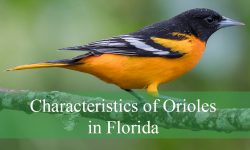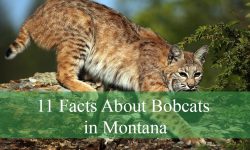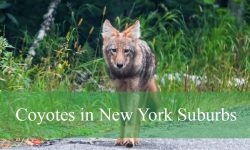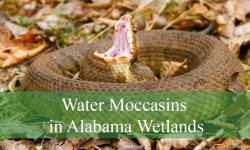Wild hogs have quietly turned into a recurring presence across Oklahoma’s rural fields and expanding suburbs. Their unexpected movements through farms, pond margins, wooded corridors, and even the green strips between neighborhoods have stirred both curiosity and unease among residents. These animals move quietly, feed aggressively, and adapt to nearly every habitat the state offers. Yet most people know only fragments of their behavior and often misunderstand how they survive so successfully.
Oklahoma’s climate and terrain provide ideal conditions for these animals to expand their range. From the pine forests of the southeast to the prairie grasslands of the west, wild hogs occupy a surprising variety of ecosystems. Their intelligence, complex social groups, and relentless drive to find food have pushed them into new territories and closer to human activity.
This article uncovers hidden facts about wild hogs in Oklahoma that many residents may not know. Their survival strategies, environmental impacts, and surprising behaviors reveal a species far more complex than its reputation suggests.
Understanding Wild Hogs in Oklahoma
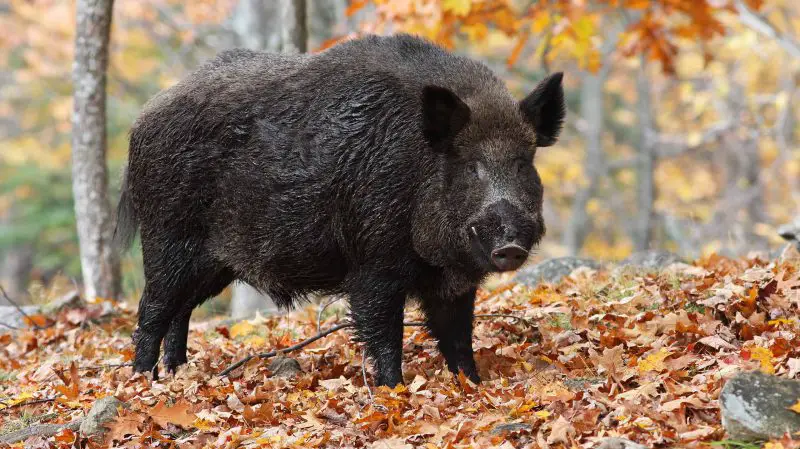
Where They Came From
Wild hogs in Oklahoma are primarily descendants of domestic pigs brought by early settlers and Eurasian wild boar introduced for hunting. Over time these populations interbred, forming what we now call feral hogs. Their rapid spread was aided by escape events from farms, intentional releases for hunting, and natural expansion into surrounding states.
By the late twentieth century, hog populations had become firmly established in Oklahoma. Today they appear in nearly every county and continue spreading because of their remarkable adaptability and prolific reproduction.
Why They Thrive in the State
Oklahoma provides a perfect mixture of factors that support wild hog populations. Mild winters allow consistent access to food and water. The state’s diverse vegetation includes crops, acorns, grasses, roots, and a wide range of natural forage. Large tracts of private land offer hiding places and minimal disturbance.
Their survival also depends on their ability to change habits quickly. When food becomes scarce in one area, hogs travel long distances to locate new sources. They transition effortlessly from forest edges to agricultural fields and from riverbanks to suburban green spaces.
These animals persist because Oklahoma’s landscape gives them the flexibility to do so.
Hidden Behaviors Most Residents Never See
Nighttime Patterns That Reduce Detection
Wild hogs are most active at night. They leave cover shortly after sunset and move silently through open fields and forest trails. Their dark coloration and low body posture help them disappear into shadows. People often underestimate their numbers because their movements occur when homes settle into quiet routines.
This nocturnal behavior allows hogs to avoid predators and human disturbance. It also gives them access to cropland and water sources under the cover of darkness.
Their Remarkably Complex Social Structure
Wild hogs travel in organized social groups called sounders. A typical sounder includes several females and their young. Older males usually roam alone unless food abundance allows temporary association. This structure creates stability within the group and increases protection for younger hogs.
Sounders often coordinate movement. Adults teach younger animals where to find water, shelter, and food. They also share knowledge of escape routes and safe resting areas. This social intelligence contributes to the resilience of hog populations across Oklahoma.
Hidden Trails and Underground Wallows
Hogs create well-worn paths through grasslands, forests, and creek bottoms. These trails become almost invisible to casual observers but serve as consistent routes between feeding and resting areas. Because they use the same pathways repeatedly, hogs leave subtle clues such as disturbed soil, uprooted vegetation, or shallow depressions.
Wallows are another feature many people overlook. Hogs create mud pits near ponds or low spots to cool their bodies and reduce parasites. These wallows help regulate body temperature during hot Oklahoma summers. Their presence often indicates long-term hog activity.
What Wild Hogs Really Eat in Oklahoma
A Diet Much Broader Than Expected
Wild hogs are opportunistic omnivores. Their diet includes roots, acorns, berries, grasses, fungi, insects, small mammals, eggs, carrion, and agricultural crops. Their ability to switch food sources throughout the year allows them to thrive in unpredictable environments.
In eastern Oklahoma, hogs depend heavily on acorns and forest vegetation. In western regions, they rely more on grasses, bulbs, and watering holes. Farmland provides high-calorie food such as corn, wheat, peanuts, soybeans, and sorghum.
Feeding Behaviors That Transform the Land
Hogs dig extensively when searching for roots, insects, and bulbs. This behavior, known as rooting, disturbs soil layers and exposes plants. While rooting provides necessary nutrients for hogs, it often damages native vegetation, weakens topsoil, and alters plant communities. In some places hogs disturb acres of land overnight.
Their feeding behavior affects wildlife habitats. Ground-nesting birds lose eggs. Native mammals compete for food sources. Amphibian breeding sites are disturbed when hogs churn up wetlands.
Their diet makes them ecological influencers in ways people rarely see firsthand.
Secret Movement Patterns Across Oklahoma
How Hogs Travel Long Distances Without Being Seen
Wild hogs may travel several miles in a single night. They follow creek channels, dry streambeds, dense brush lines, and field edges. These natural corridors let them move through both rural and suburban areas with minimal detection.
Seasonal shifts also influence movement. During droughts, hogs concentrate around lakes, ponds, and water tanks. After heavy rains, they spread into newly softened fields rich with food. When food becomes abundant in agricultural areas, hogs appear suddenly in large numbers, then vanish just as quickly when conditions change.
How They Navigate Oklahoma’s Diverse Landscapes
Hogs rely on scent, memory, and environmental cues to navigate. They store mental maps of water locations, crop fields, and safe hiding places. When disturbed, they retreat to dense cover where they remain almost impossible to track.
Their speed and endurance surprise many people. Wild hogs can run quickly and maintain long bursts of movement, making them difficult for predators or humans to pursue.
Their navigation ability is one reason hog populations grow faster than management efforts can control.
Reproduction and Population Growth
The Fastest Reproductive Rate of Any Large Mammal in Oklahoma
Wild hog reproduction is one of the primary reasons populations expand rapidly. Females can breed at six months old and produce multiple litters per year under ideal conditions. Each litter may contain four to ten piglets or more.
Oklahoma’s mild climate increases reproductive success. Short winters give hogs longer access to food. Abundant vegetation provides nutrition for pregnant females. Safe hiding spots allow piglets to grow quickly.
Because hogs reproduce faster than they are removed, populations continue to increase even with active control programs.
How Mothers Protect Their Young
Sows guard their young aggressively. They choose dense cover for farrowing sites and move piglets frequently to avoid detection. Young hogs learn quickly from adults, memorizing danger cues, escape routes, and feeding areas.
This protective behavior increases survival rates and contributes to the species’ expansion across Oklahoma.
Environmental Impact Few People Understand
Soil Disruption on a Large Scale
Rooting by hogs transforms soil structure. When hogs dig, they expose roots, disturb seed banks, and alter erosion patterns. Over time this leads to changes in plant composition. In areas with repeated rooting, native grasses may vanish and be replaced by invasive species.
Soil disturbance can also affect water quality. Uprooted vegetation increases sedimentation in streams and ponds. This cloudiness affects fish health and aquatic plant communities.
Competition With Native Wildlife
Wild hogs compete with deer, turkey, quail, raccoons, and other wildlife for food. They consume eggs of quail and turkey, reduce acorn availability, and disturb small animal habitats. Their presence alters food webs in ways that may take years to reverse.
Predators such as coyotes and bobcats do not significantly control hog numbers because adult hogs are large, fast, and aggressive.
Impact on Agriculture
Farmers in Oklahoma face significant challenges from hog populations. Crops are uprooted, irrigation systems damaged, and fields compacted by hog movement. Hogs also break fences, contaminate livestock water sources, and consume large quantities of grain.
Some agricultural losses occur overnight, leaving farmers with sudden and unexpected damage.
Interactions With Humans
Why Encounters Happen
Many encounters occur when hogs wander near rural homes, farms, or newly developed neighborhoods. Expanding housing developments near forested areas increase the chances of human-hog interaction.
Hogs generally avoid humans but may become bold if they learn to associate yards with food or water. Encounters most often occur at dusk or nighttime when hogs move to forage.
Are Wild Hogs Dangerous
Wild hogs typically flee when confronted. However, they may act defensively if threatened or cornered. Sows with piglets are especially cautious and may behave aggressively if they feel their young are at risk.
Though rare, human injuries occur when individuals approach hogs too closely or attempt to drive them away.
Signs of Hog Presence
Residents may notice:
• rooted soil
• muddy wallows
• hoof tracks
• foul odors near water sources
• game camera images
• damaged fences or gardens
Early detection helps prevent further damage.
Hidden Intelligence of Wild Hogs
Their Ability to Learn and Adapt
Hogs learn from negative experiences. When threatened in one area, they avoid it for long periods. They alter routes, feeding times, and resting sites to stay safe. This behavioral flexibility makes trapping and hunting more difficult.
In heavily managed areas, hogs become nocturnal almost entirely, shifting activity away from human presence.
Communication Within Groups
Wild hogs communicate using grunts, squeals, and subtle body movements. These signals convey danger, food discovery, or group coordination. Sows teach piglets how to respond to alarm calls which increases survival rates.
Their communication system is more structured than many people realize.
Managing Wild Hogs in Oklahoma
Why Eradication Is Nearly Impossible
Because hogs reproduce quickly and adapt to control efforts, eradication is unlikely. Instead, management focuses on reducing populations and minimizing damage. Removal must outpace reproduction, which requires coordination across communities and landowners.
Hunting and Trapping Practices
Hunting provides some population control but cannot eliminate hogs alone. Hogs quickly learn to avoid hunting pressure. Trapping offers more effective results when conducted strategically. Corral traps and remote-trigger systems help capture entire sounders.
Landowners often combine multiple strategies such as exclusion fencing, habitat modification, and coordinated trapping campaigns.
Preventing Property Damage
Residents can discourage hogs by:
• clearing fallen fruit
• securing trash
• fencing vulnerable areas
• removing brush piles
• reinforcing garden barriers
• maintaining clean livestock feed areas
Reducing attractants lowers the chance of hogs establishing seasonal routes through properties.
Frequently Asked Questions
Are wild hogs dangerous to humans in Oklahoma
They typically avoid humans but may act defensively if threatened or cornered.
What do wild hogs eat in Oklahoma
Their diet includes plants, roots, insects, small animals, crops, and carrion.
Why are hog populations increasing
Rapid reproduction, adaptable diets, and abundant habitat allow continuous growth.
Do wild hogs damage the environment
Yes. Rooting disrupts soil, vegetation, and water quality while affecting native wildlife.
Can wild hogs be eradicated
Statewide eradication is unlikely. Management focuses on control rather than elimination.
Where are hogs found in Oklahoma
They appear in forests, grasslands, farms, river corridors, and suburban edges.
Do predators help control hog numbers
Predators may take piglets but rarely reduce overall populations.
Are hogs active during the day
They can be but are increasingly nocturnal in populated areas.
How quickly do they reproduce
Females may produce multiple litters per year under ideal conditions.
What is the best control strategy
Large-scale trapping combined with community coordination provides the best results.
Final Thoughts
Wild hogs have become one of the most influential and misunderstood animals in Oklahoma. Their ability to adapt, travel, and reproduce makes them a species that shapes landscapes far beyond their appearance. They reshape soil, challenge farming practices, and alter wildlife communities in subtle but lasting ways.
Understanding their hidden behaviors and ecological impacts is essential for residents, landowners, and conservationists. Wild hogs are not simply pests; they are complex animals navigating a world changed by human activity. Awareness and thoughtful management offer the best path toward balancing their presence with the needs of Oklahoma’s environment and communities.

